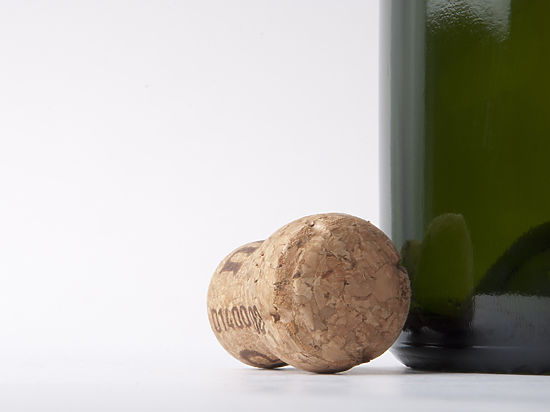Bottles from the seabed to keep secrets “Veuve Clicquot»
Yesterday, at 14:01, Views: 10112
In the Baltic Sea 2010 were found 168 bottles of champagne ancient trapped at the bottom of the sea after a shipwreck. Point of champagne turned about 175 years. Detailed analysis of vintage champagnes, lain at the bottom of the Baltic Sea about 170 years, held by a group of researchers from France and Germany. Their findings the authors published in the journal Proceedings of the National Academy of Sciences.

Photo: morguefile.com
On the sunken ship, which was carrying champagne, little is known – there is no evidence from which he sailed who his captain, as well as when and why he drowned off the coast of Finland. It is believed that wine was being taken to Germany or Finland, but not in Russia, where Veuve Clicquot champagne sold as La Russe.
The first tasted this drink divers who pulled the find to the surface. They opened one of the bottles and take a drink to see how old champagne found – on the bottles did not have any tags. Then it seemed that guilt turned more than a hundred years, and the bottles were transferred to the experts for the study.
Scientists for 5 years was carried out chemical and taste tests found fault reports americaru.com. As a result, it was found that the champagne of the XIX century is very similar to what we drink today.
«We thought that the chemical composition of the wine will be very different from the modern champagne. But it is not – the content is very similar, “- said Philip Zhinde (Philippe Jeandet), professor at the University of Reims Champagne-Ardenne in France. Experts believe that found the wine was made in 1840-1841, respectively. According to the analysis of traffic jams, wine refers to the product houses Veuve Clicquot in Ponsardene, Heidsieck and Juglar (later known as Jacquesson). They compared the finding with examples of contemporary Veuve Clicquot, produced in 1955, 1980 and 2011.
As shown by chemical analysis and tasting, champagne from the bottom of the Baltic Sea belonged to the category of semi-dry and dry wines, which was a surprise to Jandia and his colleagues – they believed that these stocks “Veuve Clicquot” were sent to Russia, where since 1814, their fascination with very sweet varieties of champagne. Apparently, his buyers are German principalities of the city, whose residents prefer wines with low sugar.
According to the large shares of metal ions in champagne, it was made of small berries, whose juice was stored in wooden barrels during primary fermentation, stay in which left traces in the form of a special carboxylic acids. This finding was also unexpected for chemists, because today winemakers do not use such vessels in the manufacture of sparkling wines, said RIA Novosti.
Another unusual component was champagne grape syrup, which is added to the drink instead of beet sugar, which is usually sweetened and semi-sweet wines today. In it’s easy to believe, as Madame Clicquot was an opponent of such sweeteners, and prefer to use a mixture of cane sugar syrup and berry.
Most of the scientists were surprised that the champagne is well preserved and almost did not contain traces of germs which cause spoilage of wine. This means that in the company of Madame Clicquot supports almost flawless occupational health, comparable to the modern practice of sparkling wine production.
On the other hand, as noted by the researchers themselves, the safety of bottles of “Veuve Clicquot” also indicates ideal conditions for storage of champagne at the bottom of the sea. This practice underwater storage of champagne might be interesting for modern winemakers conclude chemists.
Old drink turned sweeter modern analogues that have been linked with the addition of grape syrup (which, as previously thought, opposed Madame Clicquot) and contained little acetic acid, which is a sign of high quality wines.
However, the old champagne became much less fizzy – most likely, for 170 years the carbon dioxide went through the cork from the bottle into the water.
Winemakers noted that the wine does not contain harmful microorganisms, which means good hygiene labor existed in the production of the drink. Experts also drew attention to the fact that the conditions on the seabed were optimal for storage of moist and dry wines, adds lenta.ru.
«Veuve Clicquot» (Veuve Clicquot) – French company founded in 1772 by Philippe Click-Muiron. Enterprises engaged in the banking business, the wool trade and production of champagne, only switched on wine only after the death of the son of the founder Franz Clicquot, when the business passed to his widow.
No comments:
Post a Comment